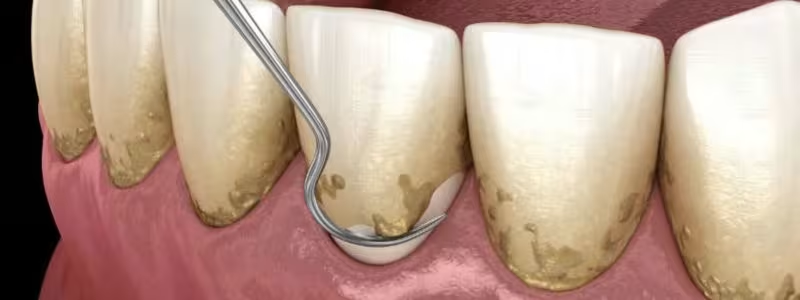Mon - Sun 9 AM - 9 PM
 +91 9000021174
+91 9000021174  [email protected]
[email protected]
5.0
8765 Reviews
When it comes to oral health, brushing and flossing alone aren't always enough. Over time, plaque can harden into tartar and accumulate below the gum line—an area that regular cleaning can’t reach. This hidden tartar becomes a breeding ground for bacteria, leading to gum disease, bone loss, and even tooth loss if left untreated. That’s where deep cleaning, or scaling and root planing, becomes essential. It’s not just about a brighter smile—it’s about protecting your gums and preserving your teeth.

Deep cleaning is a specialized dental procedure designed to remove tartar and bacteria from below the gum line. Unlike regular cleaning, which focuses on the surface of the teeth and gum line, deep cleaning targets the pockets that form between the teeth and gums when gum disease begins. This process involves two main steps: scaling and root planing. Scaling removes tartar deposits from the tooth surface and beneath the gums, while root planing smooths the root surfaces to help gums reattach and heal properly.
Tartar hidden below the gums is not only difficult to see but also dangerous. It traps bacteria close to the bone and tissue that support your teeth. This ongoing bacterial activity triggers inflammation, leading to gingivitis and, eventually, periodontitis. In advanced cases, this can cause irreversible damage to the gums and jawbone, increasing the risk of tooth mobility and loss. Removing this tartar early is critical to maintaining long-term oral health.
Not sure if you need a deep cleaning? Some common signs include:
If you’re experiencing any of these symptoms, your dentist may recommend a comprehensive periodontal evaluation followed by a deep cleaning procedure.
A deep cleaning is typically performed under local anesthesia to ensure your comfort. The dental hygienist or periodontist will use special instruments to carefully remove tartar and plaque from below the gum line (scaling), then smooth the root surfaces to discourage future buildup (root planing). Depending on the severity of your case, the procedure may be completed in one or two appointments, and sometimes in quadrants to minimize discomfort.
After a deep cleaning, it’s normal to experience mild tenderness or sensitivity for a few days. Your dentist may recommend:
It’s also essential to maintain follow-up visits to monitor healing and prevent re-infection. Most patients notice an improvement in gum health and reduced inflammation within a few weeks.
Prevention is the key to long-lasting results after deep cleaning. Here’s what you can do:
Sticking to a consistent oral hygiene routine at home is just as important as professional care in preventing tartar from building up again.
Deep cleaning offers numerous benefits, including:
It’s a proactive step to halt or reverse the early stages of gum disease, safeguarding your long-term oral health.
If you're concerned about gum health or suspect tartar buildup below the gums, don’t wait. Early intervention is key to preventing long-term damage. Contact our dental office today to schedule a consultation and find out if a deep cleaning is the right solution for your smile.
Tartar, or hardened plaque, forms when plaque isn’t completely removed during brushing and flossing. Over time, bacteria in plaque migrate below the gum line, harden into tartar, and cause inflammation. Once it’s below the gums, only a dental professional can safely remove it.
If tartar is left untreated below the gums, it can lead to periodontal disease, which causes the gums to pull away from the teeth, bone loss, and eventually tooth loss. Deep cleaning helps to stop the progression of the disease and supports healing.
Yes, in many cases, once the tartar is removed and the area is disinfected, gums can reattach to the teeth as they heal. This reduces pocket depth and helps prevent future tartar buildup.
Deep cleaning is typically recommended only when there are signs of gum disease. Once treated, your dentist may suggest more frequent cleanings (every 3–4 months) to prevent recurrence. Your ongoing needs will depend on how well your gums respond and your oral care habits.
Yes, deep cleaning is safe and effective for most patients, especially those with gingivitis or early to moderate periodontitis. If you have specific health conditions (e.g., heart disease or diabetes), your dentist may take extra precautions or tailor the treatment plan accordingly.